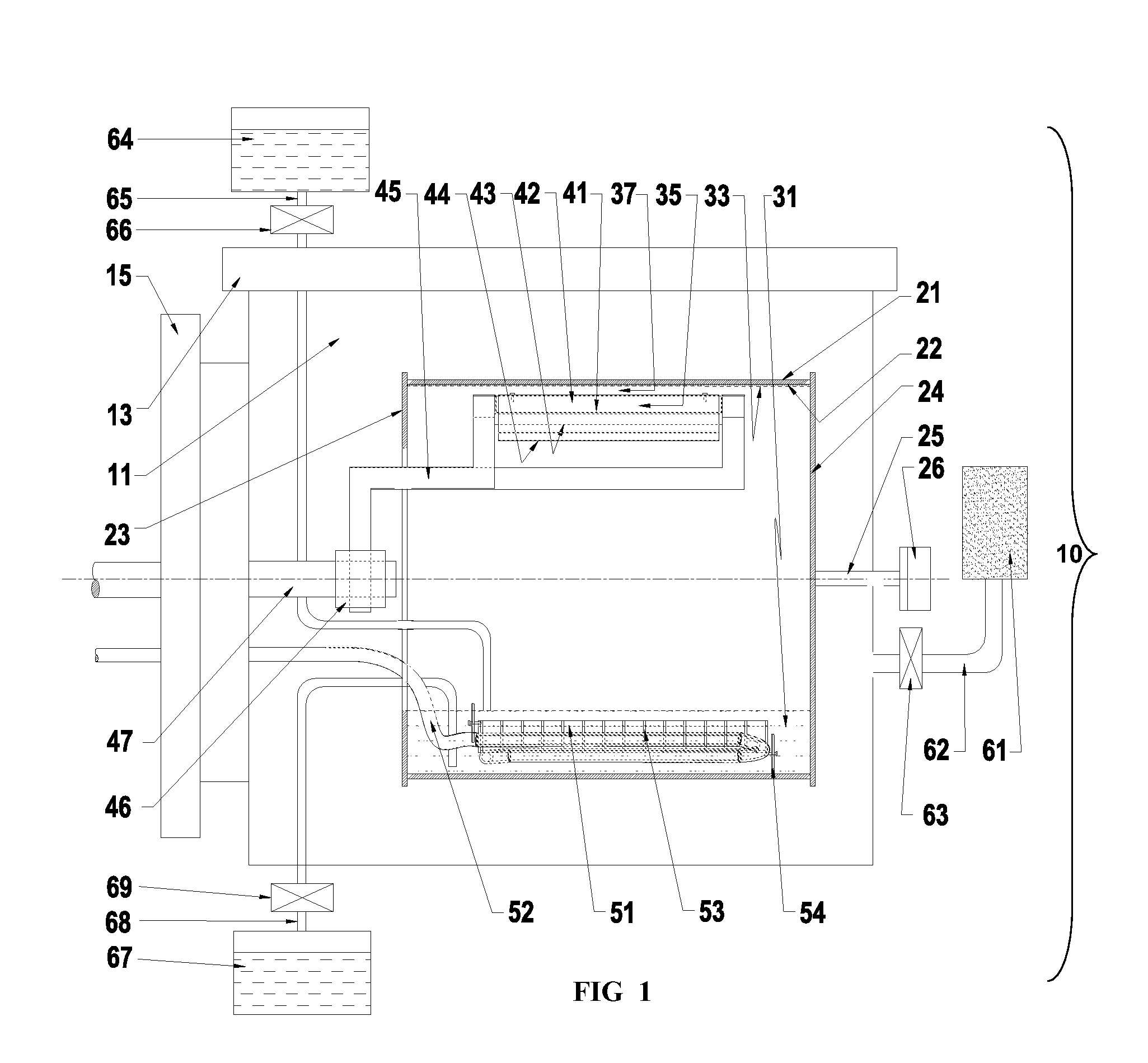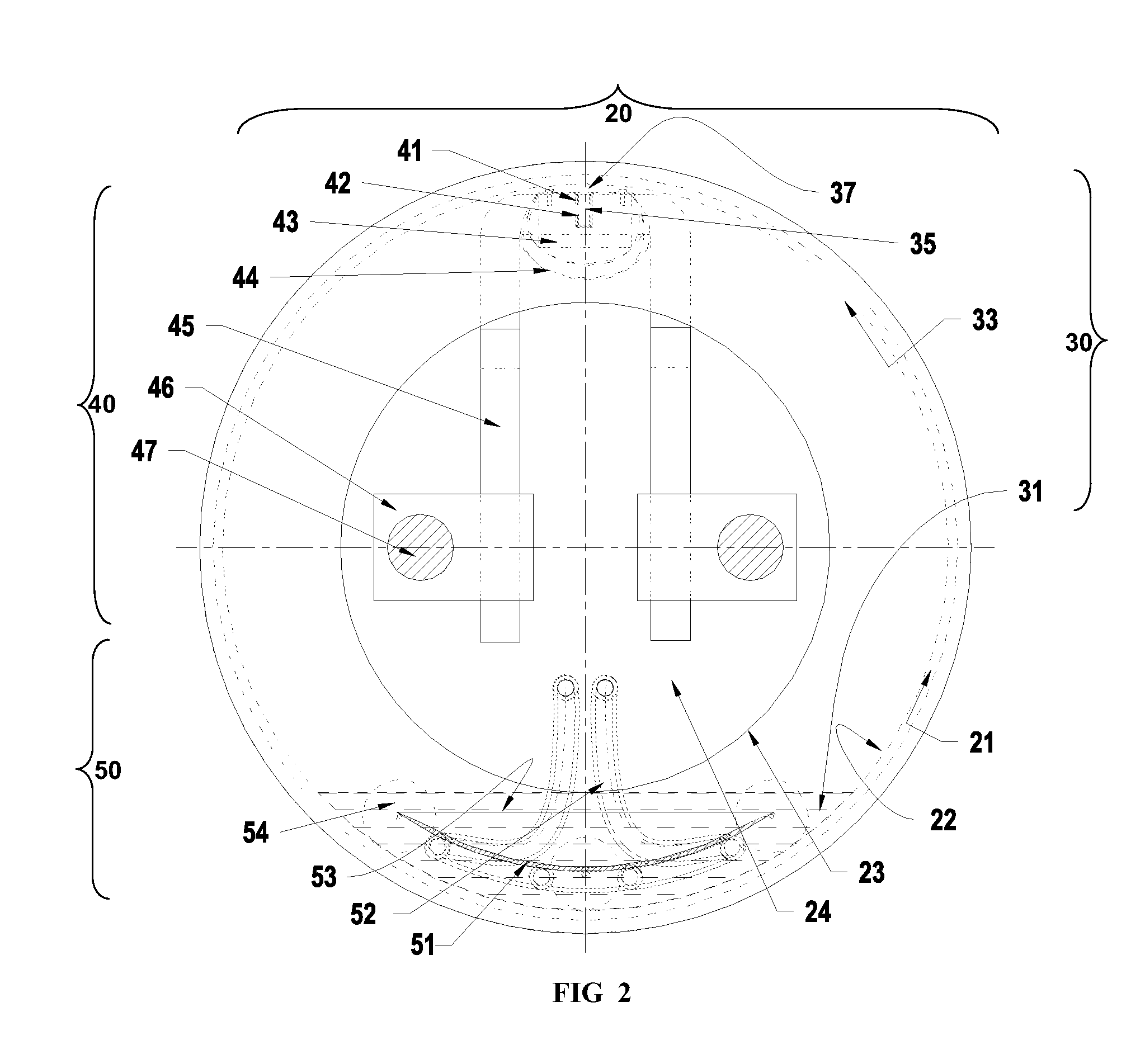One-step method for the production of nanofluids
a nanofluid and one-step technology, applied in the field of one-step method and system for the manufacture of nanofluids, can solve the problems of inability to achieve the effect of reducing the amount of time, reducing the distance between the hbe and the hbe, and reducing the size of the nanoparticles incorporated
- Summary
- Abstract
- Description
- Claims
- Application Information
AI Technical Summary
Benefits of technology
Problems solved by technology
Method used
Image
Examples
Embodiment Construction
[0029]The most preferred embodiments of the invented one-step nanofluid production system 10 are presented in FIGS. 1-10. FIGS. 1, 2 and 3, illustrates one embodiment of the invented one-step nanofluid production system 10 using a rotating drum assembly 20, nanofluid material assembly 30, a heater boat-evaporator (HBE) assembly 40, and a heat-exchanger-cooler (HXC) assembly 50 in a vacuum chamber 11 along with optional innovative accessories group 60 (61-69), is shown. On FIGS. 2, 3 and 4 the most characteristic projections, orthogonal and isometric views of the rotating drum assembly 20 with nanofluid material assembly 30, including liquid pool 31 with thin film of liquid 33 and evaporant material 35, as well as the two critical assemblies, the heater-boat-evaporator (HBE) assembly 40 and heat-exchanger-cooler (HXC) assembly 50 are presented. The HBE assembly 40 is detailed on FIGS. 5 and 6, with the preferred functional positioning presented on FIG. 7, while the HXC assembly 50 is...
PUM
| Property | Measurement | Unit |
|---|---|---|
| size | aaaaa | aaaaa |
| size | aaaaa | aaaaa |
| size | aaaaa | aaaaa |
Abstract
Description
Claims
Application Information
 Login to View More
Login to View More - R&D
- Intellectual Property
- Life Sciences
- Materials
- Tech Scout
- Unparalleled Data Quality
- Higher Quality Content
- 60% Fewer Hallucinations
Browse by: Latest US Patents, China's latest patents, Technical Efficacy Thesaurus, Application Domain, Technology Topic, Popular Technical Reports.
© 2025 PatSnap. All rights reserved.Legal|Privacy policy|Modern Slavery Act Transparency Statement|Sitemap|About US| Contact US: help@patsnap.com



